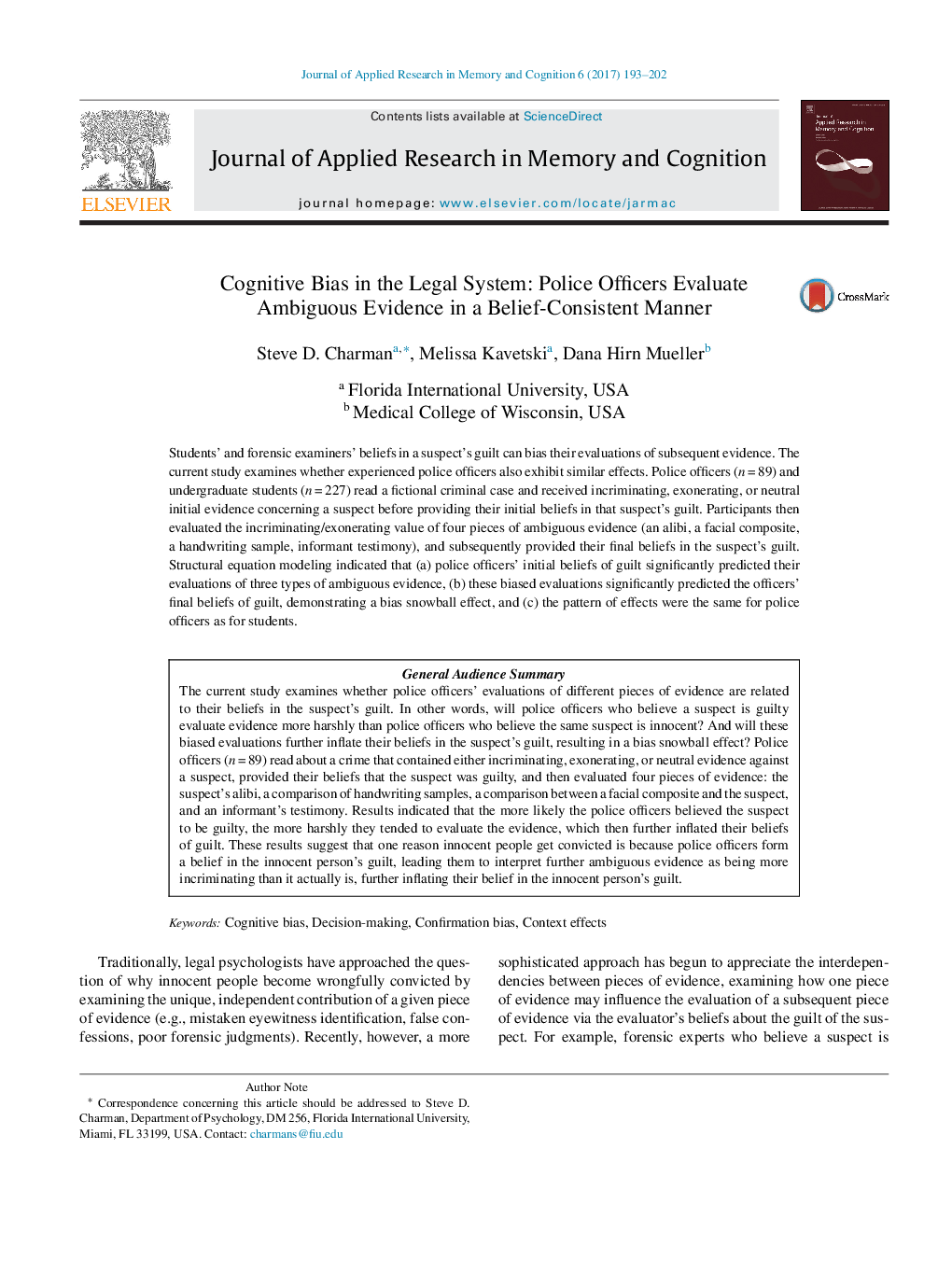| Article ID | Journal | Published Year | Pages | File Type |
|---|---|---|---|---|
| 5033993 | Journal of Applied Research in Memory and Cognition | 2017 | 10 Pages |
Students' and forensic examiners' beliefs in a suspect's guilt can bias their evaluations of subsequent evidence. The current study examines whether experienced police officers also exhibit similar effects. Police officers (n = 89) and undergraduate students (n = 227) read a fictional criminal case and received incriminating, exonerating, or neutral initial evidence concerning a suspect before providing their initial beliefs in that suspect's guilt. Participants then evaluated the incriminating/exonerating value of four pieces of ambiguous evidence (an alibi, a facial composite, a handwriting sample, informant testimony), and subsequently provided their final beliefs in the suspect's guilt. Structural equation modeling indicated that (a) police officers' initial beliefs of guilt significantly predicted their evaluations of three types of ambiguous evidence, (b) these biased evaluations significantly predicted the officers' final beliefs of guilt, demonstrating a bias snowball effect, and (c) the pattern of effects were the same for police officers as for students.
